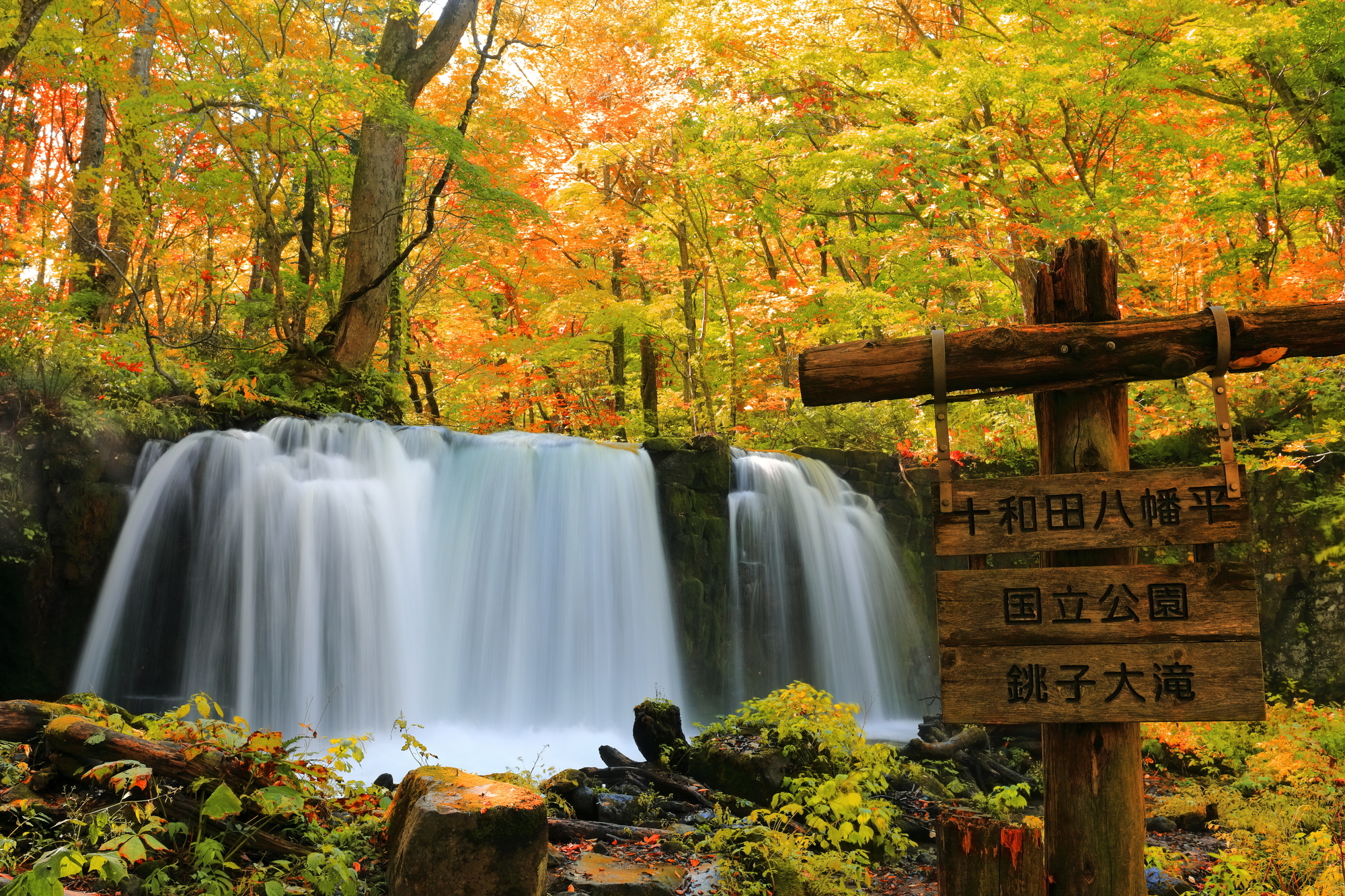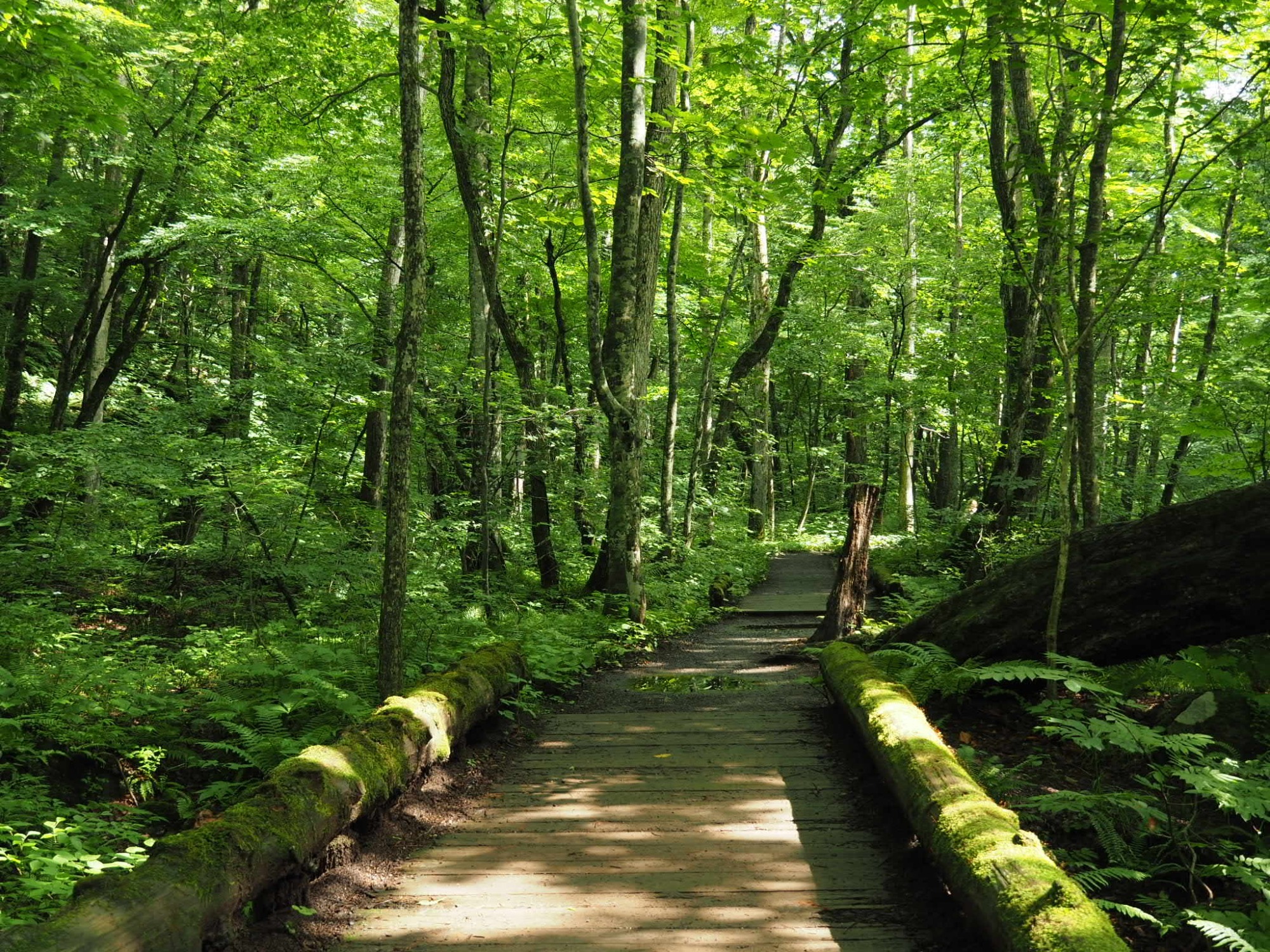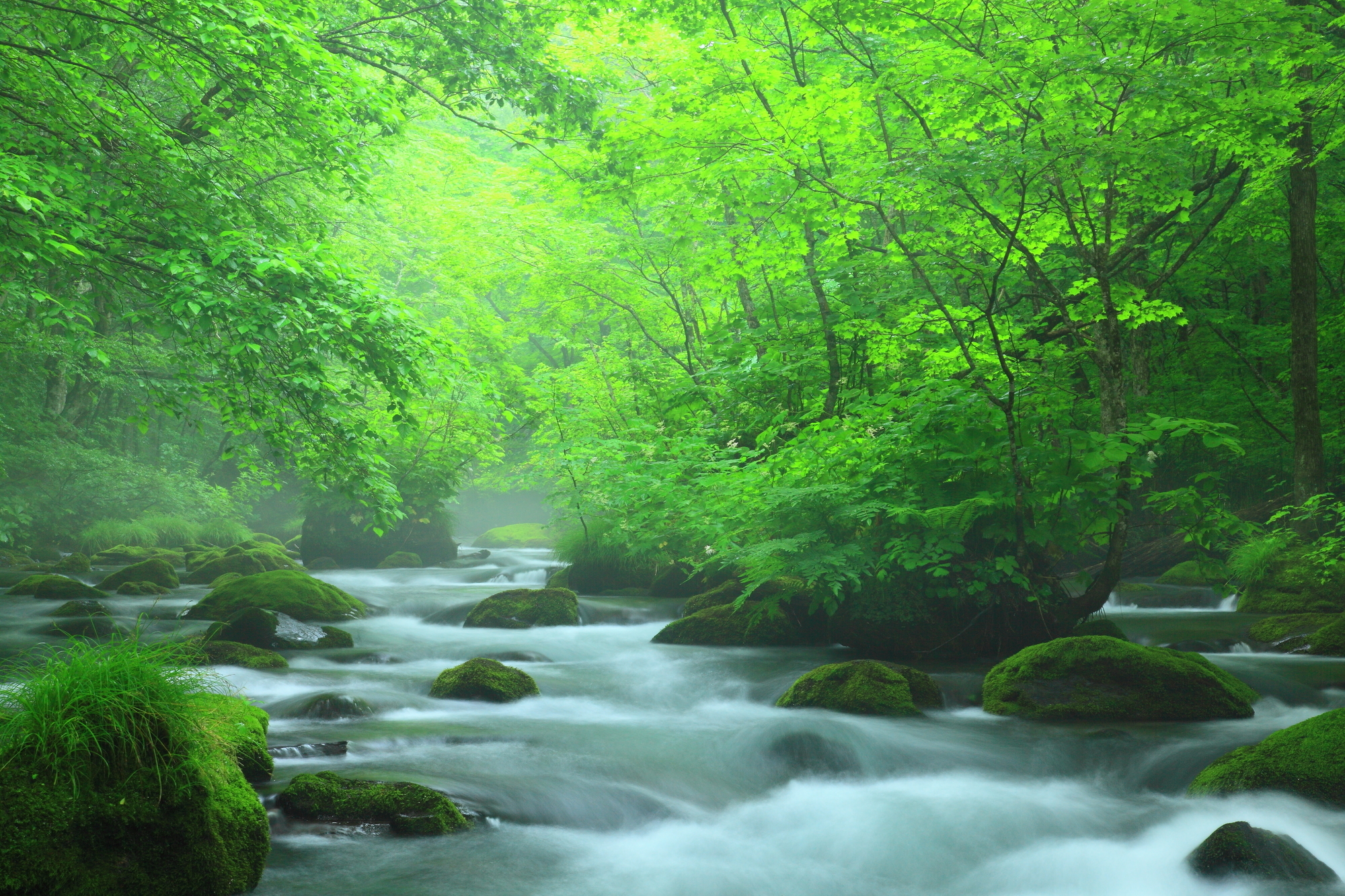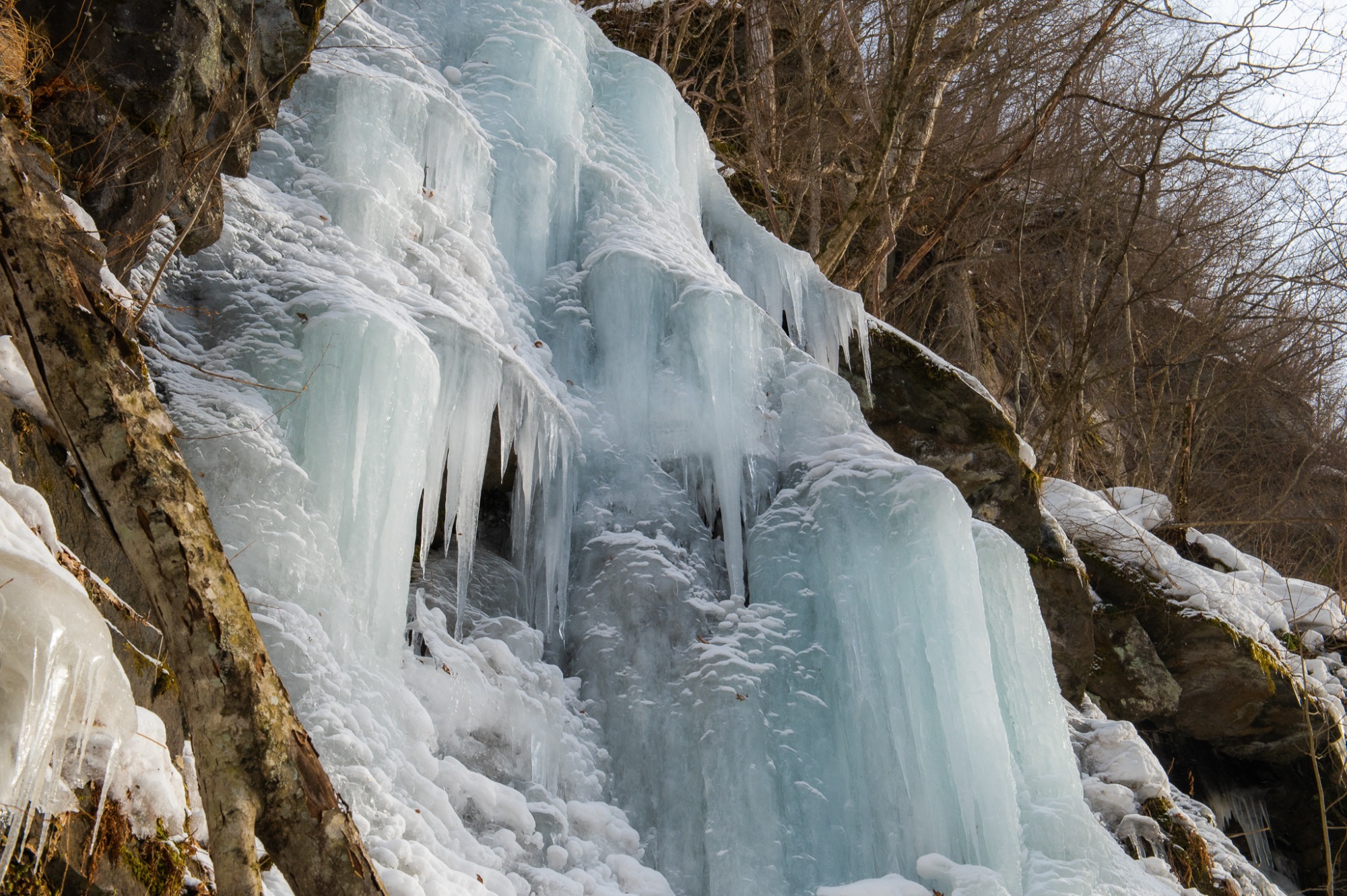Oirase Stream Complete Guide
Pledges to Nature to Keep in the Sanctuary
Table of Contents
This is a "Living Museum of Nature." A Journey to Hear the Water's Poem of Oirase Stream.

The sound of water, changing its expression from a gentle murmur to a rushing roar. The air is cool and moist, filled with the deep, rich scent of moss. From the primeval beech and maple forest overhead, sunlight filters through, sparkling on the water's surface. Oirase Stream, located in Towada-Hachimantai National Park in Aomori Prefecture, is a "living museum of nature" that quietly and richly fills the senses of its visitors.
This gorge, created by the Oirase River—the only river flowing out of Lake Towada—over approximately 14 kilometers, is characterized by a succession of large and small waterfalls, varied water flows, and a lush carpet of moss covering rocks and fallen trees. The autumn foliage, when the entire mountain is dyed in fiery reds and yellows, and the winter "hyobaku" (frozen waterfalls), when the severe cold freezes everything and creates sculptures of blue ice, are breathtakingly beautiful.
This guide is your manual to becoming the best appreciator of this museum. Most of Oirase Stream is designated as a National Special Place of Scenic Beauty, a Natural Monument, and a "Special Protection Zone" of the national park, a sanctuary that must be protected with the utmost strictness. The manners introduced here are not just rules, but the responsibilities and promises entrusted to us, the visitors, to minimize our impact on nature as a member of this delicate and precious ecosystem.
Now, take off your headphones and look away from your smartphone screen. Let's begin a journey to listen deeply with your ears, eyes, and skin to the poem of water that Oirase奏でる.
1.The Gorge Beauty Born from Lake Towada: The Formation and Story of Oirase Stream
How was this exceptionally beautiful gorge created? The background lies in the activity of a giant volcano and the passion of the people who introduced and protected it.
1-1. The Art Created by Volcanoes and Water: The Secret of Oirase's Topography
The mother of Oirase Stream is Lake Towada, formed by volcanic activity that began about 200,000 years ago. Water accumulated in the caldera created by a massive eruption to form the lake, and the Oirase Stream began when one part of the caldera wall collapsed. Over long years, the flowing water deeply eroded the relatively soft rock bed formed from solidified volcanic ejecta, creating the present-day cliffs, strange rock formations, and countless waterfalls.
1-2. The Landscape Loved by the Writer Keigetsu Omachi: "If you live, live in Japan; if you play, play at Towada..."
In the Meiji era, it was the writer Keigetsu Omachi who spread the beauty of Oirase Stream and Lake Towada to the world. He deeply loved this land and energetically introduced its charms in his travelogues. The words he left behind, "If you live, live in Japan; if you play, play at Towada; if you walk, walk the three and a half ri of Oirase" (a ri is about 4km), are very famous and have invited many people to this land. His achievements became a major driving force for its later designation as a national park.
1-3. Japan's Treasure, the "Moss Forest": Why is Oirase a "Sanctuary for Moss"?
Oirase Stream has also been selected as one of "Japan's Precious Moss Forests," with about 300 of the 1,800 moss species in Japan confirmed here. Why does such a rich variety of moss grow here? It's because the conditions optimal for moss growth—a humid environment along the stream, moderate sunlight created by the primeval beech forest, and clear, cool water—have miraculously come together. The sight of everything, from rocks to tree trunks and fallen logs, covered in a green velvet is another main attraction of Oirase.
1-4. [2025 Update] Tourism in Harmony with Nature and New Winter Charms
![1-4. [2025 Update] Tourism in Harmony with Nature and New Winter Charms](/library/689c2e896e58203ab69c5bd3/68cb827160b32077aacde759.jpg)
To reduce the environmental impact, measures such as restricting private car traffic (during specific periods and sections) and promoting eco-tours using electric vehicles are being implemented at Oirase Stream. In addition, the charm of winter, which was previously considered the off-season, has been gaining particular attention in recent years. Tours guided by specialists to see the frozen waterfalls and icicles, as well as light-up events, are held, evolving it into a year-round destination.
2.Preparations & Basic Info: To Enjoy the Stream Stroll 120%
A 14km long stream. It's important to plan where and how to walk.
2-1. Complete Access Guide from Aomori and Hachinohe
- Local Bus (Recommended): From JR Aomori Station or JR Hachinohe Station, the JR Bus Tohoku "Oirase-go" and "Mizuumi-go" run to Lake Towada (service may be suspended or reduced in winter). Being able to get on and off freely at major bus stops along the stream makes it convenient to plan a one-way walk. Using a free pass is a good value.
- Rental Car: Offers high flexibility, but expect heavy traffic during the autumn foliage season. Be sure to check for traffic restrictions in advance. Driving in winter requires extreme proficiency on snowy roads.
2-2. How to Walk the 14km: Highlights by Area and Recommended Routes
Oirase Stream changes its character slightly in its upper, middle, and lower reaches.
- Upstream (Choshi Otaki Waterfall to Nenokuchi): The flow is relatively calm, featuring the highlight, the 20m-wide "Choshi Otaki Waterfall."
- Midstream (Kumoi no Taki Waterfall to Choshi Otaki Waterfall): This is the area with the most highlights, including the rapid and dynamic "Ashura no Nagare" (Ashura Stream).
- Downstream (Yakeyama to Kumoi no Taki Waterfall): The flow is gentle, perfect for a leisurely stroll.
- Recommended Route: Utilize the bus according to your physical fitness. The most popular is a 2-3 hour course starting from the "Ishigedo" bus stop in the midstream area, passing "Kumoi no Taki" and "Ashura no Nagare," to "Choshi Otaki."
2-3. Autumn Foliage Hike and Winter Ice Fall Walk: Seasonal Attire and Essential Gear
- Autumn (Mid to Late Oct): Peak foliage season. Although the path is well-maintained, it can be slippery with fallen leaves, so trekking shoes are ideal. It gets cold in the mornings and evenings, so a fleece or a light down jacket is essential.
- Winter (Dec to Feb): A sub-zero world. In addition to full winter gear (like ski wear), a hat, gloves, and a neck warmer are absolutely necessary. The path is completely frozen, so consider that walking is impossible without crampons or chain spikes for your shoes.
3.[Crucial] As a Visitor to a Special Protection Zone: 7 Sanctuary Rules to Keep in Oirase
In this sanctuary, each and every one of us is a guardian of nature.
3-1. The Path is a Boundary with Nature: The Absolute Promise Not to Step Off

For whatever reason—to take a photo, to take a shortcut—never stray from the maintained walking path. A single step of your shoe can destroy the precious moss and plant ecosystem that has taken decades or centuries to grow. Cultural Context: The forest as a sacred domain. Japanese animism and view of nature. In Japanese Shintoism, it has long been believed that gods reside in forests, giant trees, and rocks (animism). The walking path is like a "kekkai" (boundary) that separates the area humans are permitted to enter from the sacred domain of nature. Not crossing that boundary is an expression of awe for nature. |
3-2. "Take Only Memories": The Taking of Any Flora, Fauna, Rocks, or Water is Strictly Forbidden
It is strictly prohibited by law to take anything from Oirase Stream, be it beautiful moss, a nicely shaped stone, a single fallen leaf, or a mushroom. Everything in this place is an important part of the ecosystem. Cultural Context: "Itadakimasu" and "Gochisousama." Gratitude and moderation for nature's blessings. When eating, Japanese people say "Itadakimasu" to express gratitude for life. Nature observation is the same. We "receive" the blessings of nature by seeing with our eyes and feeling with our hearts. However, the "moderation" of not trying to physically possess it is required. |
3-3. The Right Distance from Wildlife: Awareness that this is Bear Habitat
Oirase Stream is a habitat for Asiatic black bears. The chances of an encounter are low, but as a precaution, it's recommended to avoid hiking alone and to carry a bear bell to announce your presence. Of course, feeding them is strictly forbidden. If you see other animals like serows or monkeys, stay calm and observe them from a quiet distance. |
3-4. Photography Manners: Sharing the Space Without Harming Nature
When setting up a tripod, choose a spot that does not obstruct other hikers. Avoid occupying a spot for a long time, especially on bridges or narrow paths. Be extremely careful where you place the legs of your tripod so as not to damage the precious moss. |
3-5. Respect for the Art of Winter Ice: Do Not Touch the Frozen Waterfalls and Icicles
The winter frozen waterfalls and icicles are like delicate glasswork created by nature. Carelessly touching or, worse, breaking them is an act of destroying this winter-only artwork. Appreciate their ephemeral beauty quietly. |
3-6. The Issue of Toilets and Trash: Thorough Self-Management in a National Park
There are a limited number of toilets along Oirase Stream. Be sure to use one before you start your walk. There are no trash cans. You are responsible for carrying out all of your own trash, including food and drink packaging. Cultural Context: "A departing bird leaves no trace." The aesthetics and responsibility of a traveler. This proverb shows the basic virtue expected of travelers and visitors to not defile the place they leave. Having enjoyed the beautiful nature, one has a responsibility to pass it on cleanly to the next person. |
3-7. Enjoying the Silence: A Place Where the Murmur of the Stream is the Main Character

The greatest charm of Oirase is the silence and the pleasant sound of water, freeing you from the hustle and bustle of the city. Loud conversations or playing music on speakers will destroy the sacred atmosphere of this place. Cultural Context: The culture of "listening" to the sounds of water and wind. Like the "shishi-odoshi" in a Japanese garden or the sound of boiling water in a tea room, Japanese culture finds elegance and charm in listening to the subtle sounds of nature. By all means, try to "listen" to the various tones of the stream. |
4-1. Stream Highlights: Ashura no Nagare, Kumoi no Taki, Choshi Otaki... a Myriad of Famous Spots
4-2. The Other Main Character, "Moss": A Micro World through a Loupe on a "Moss Walk"
4-3. A Winter-Only Spectacle: The Blue World of Frozen Waterfalls and Icicles
In the dead of winter, the waterfalls and seeping cliff faces of Oirase freeze completely, becoming giant pillars of ice "hyobaku" and countless "tsurara" (icicles). The sight of these glowing blue in the sunlight is a breathtaking view that can only be seen in winter. A nighttime light-up tour promises an even more fantastical experience.
4-4. Soothing Tired Feet from Walking: Famed Hot Springs like Tsuta Onsen and Sukayu Onsen
Around Oirase, there are wonderful hot springs dotted at the foot of the Hakkoda Mountains. From the secret spring "Tsuta Onsen," where the source gushes up from the bottom of the bath, to "Sukayu Onsen," known for its giant mixed-gender wooden bath called the "sennin-buro" (thousand-person bath), these are the perfect places to warm your chilled body after a stream walk.
5.Planning Your Trip: Model Itineraries to Become One with Nature
5-1. [Day Trip] Touring by Bus! An Oirase Stream Highlights Walk Course
- Morning: Take a bus from Hachinohe or Aomori Station to Oirase Stream. Get off at "Ishigedo" and start walking.
- Noon: Walk towards "Choshi Otaki," passing "Ashura no Nagare," "Kumoi no Taki," etc. Have a light meal at a rest stop along the stream.
- Afternoon: After seeing "Choshi Otaki," walk to the end point "Nenokuchi," then take a bus to the shore of Lake Towada. After a brief view of the lake, head back by bus.
5-2. [1 Night, 2 Days] Staying at an Inn Along the Stream. An Autumn Foliage and Onsen Full Course
- Days 1:
〇Afternoon: Arrive at Oirase Stream. Check into a resort hotel along the stream.
〇Until Evening: Stroll around the hotel and enjoy observing the moss.
〇Night: Soak slowly in the onsen and savor a dinner made with local ingredients. - Days 2:
〇Morning: Take a walk along the stream in the refreshing early morning air.
〇Forenoon: Use the bus to hike a section you couldn't walk the previous day.
〇Noon: Lunch at a restaurant along the stream.
〇Afternoon: Head towards the Hakkoda area by bus, stopping by a secret onsen like Tsuta Onsen before heading home.
5-3. [Winter Exclusive] With a Professional Guide! A Frozen Waterfall and Icicle Exploration Course
- Days 1: Stay at a hotel in the Oirase area. Participate in a frozen waterfall light-up tour at night.
- Days 2: In the morning, go on a snow hike along the winter stream with a professional nature guide, wearing crampons. Enjoy the art of ice, which looks different during the day and at night, before heading home.
The Sensitivity to Nature to Take Home with You

What you take home from your trip to Oirase Stream is not just the spectacular photos captured by your camera. It is your own "sensitivity to nature," sharpened by listening to the murmur of the stream, the songs of birds, and the sound of the wind rustling the trees, by being amazed at the tiny world of moss, and by feeling the coldness of the water and the scent of the forest on your skin.
The time spent quietly as a part of nature in this sanctuary-like place will re-sharpen our senses, which may have become a little dull in our information-overloaded daily lives. That sharpened sensitivity is the most precious souvenir of this journey, and it will be a force to enrich your tomorrow.

